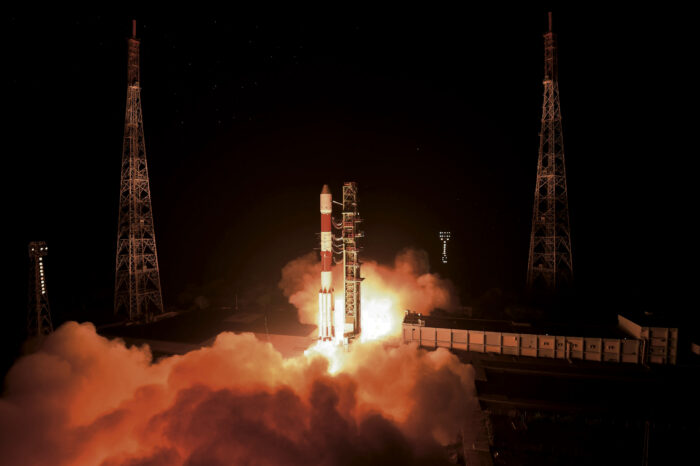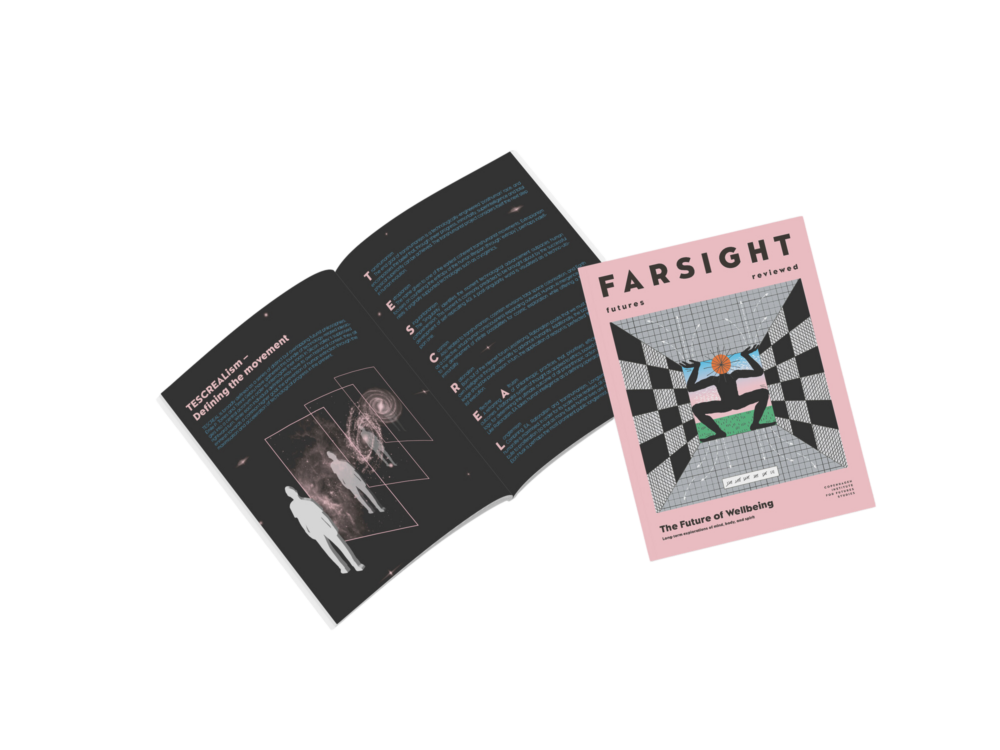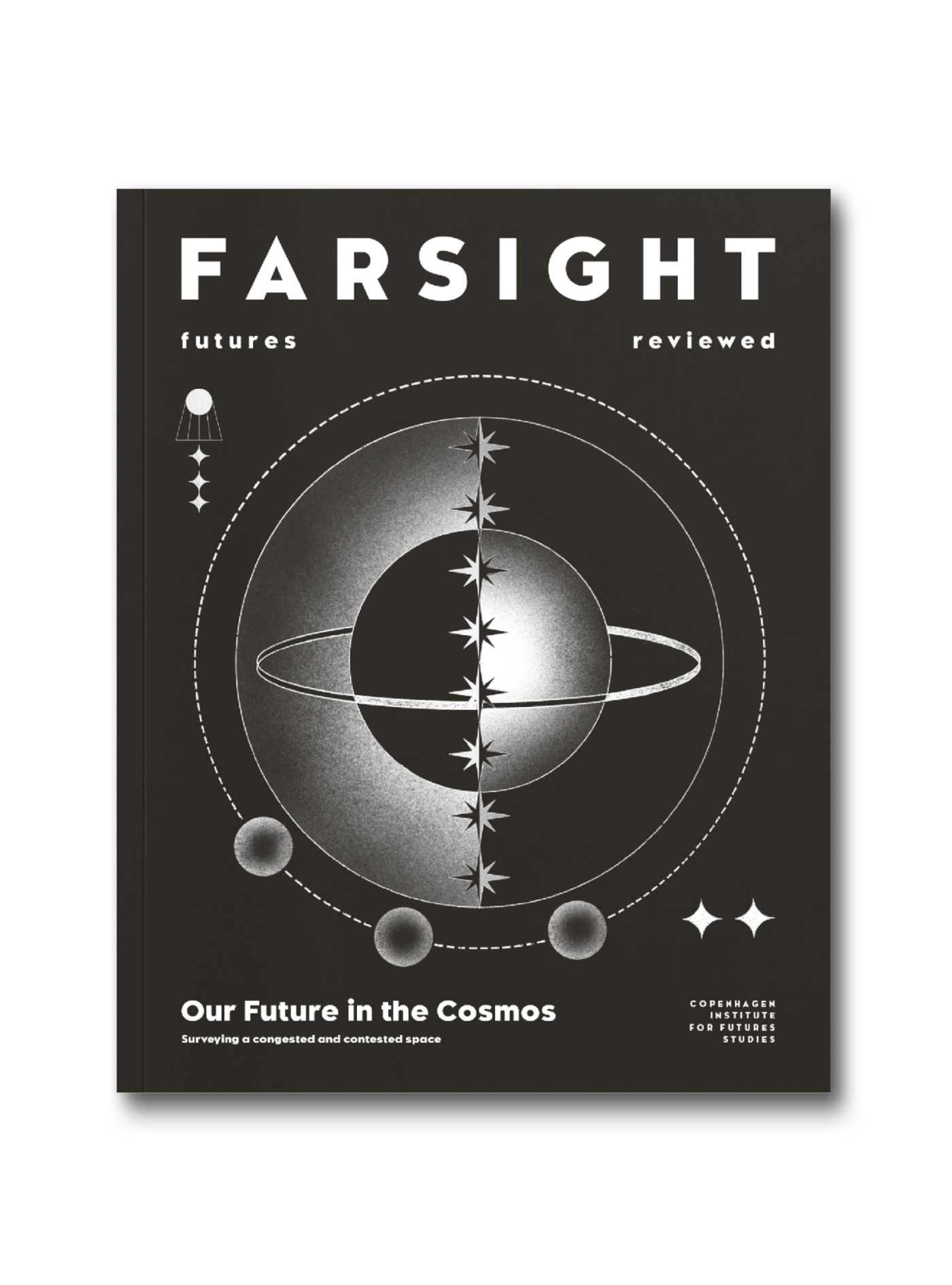
In turn, we use cookies to measure and obtain statistical data about the navigation of the users. You can configure and accept the use of the cookies, and modify your consent options, at any time.

Three archetypal scenarios dominate the public perception of what an eventual encounter with extraterrestrials on Earth will look like. So what happens when the aliens arrive? A task force at the UN has a plan drawn up.
Images: The Visit & Magic Hour Films
Space. The final frontier. Thus, as any fan would know, begins each episode of the famous Star Trek TV series. In this fictive universe, human civilisation has evolved into an interplanetary space-exploring federation; we ourselves are the ‘aliens’ that visit the home-planets of other species to both learn from and educate them.
Usually, however, it’s the other way around. The idea of a visit by an extraterrestrial civilisation has long captured the imagination of science fiction novelists and film makers. One of the more commonly used scenarios for this vision is of course that of an alien invasion. A classic example is H. G. Wells’ famous novel The War of the Worlds from 1897 which centres around a Martian conquest of Earth. As is often the case with science fiction, the novel can be read as a critique of contemporary society, in this case as a commentary on the devastating effects colonialism has had on indigenous peoples. In the introductory notes of the first chapter, Wells compares humanity’s encounter with the Martians to the fate of the native population of Tasmania who were very close to being wiped out completely in just a few decades during the 19th century.

Broaden your horizons with a Futures Membership. Stay updated on key trends and developments through receiving quarterly issues of FARSIGHT, live Futures Seminars with futurists, training, and discounts on our courses.
become a futures memberWells, a biologist by training, combined a Darwinian worldview with a rather pessimistic perception of human nature. Whereas the Martians (and British) may be technologically superior to their adversaries, Wells did not consider them to be morally superior. Instead, their behaviour is guided by the brutal logic of the struggle for existence, with the technologically more advanced culture destroying their counterpart.
An alien invasion is of course not the only scenario that has informed fictional accounts of encounters with extraterrestrials. An often-used alternative is the vision of such an encounter initiating a teaching process for humanity – with the alien as the ‘teacher’. An early representation of this theme is found in Arthur C. Clarke’s novel Childhood’s End from 1953. The story (written during the early days of the Cold War) begins in the late 20th century at a time when the world’s superpowers, the US and Soviet Union, are competing to launch the first spaceship into orbit.
Seemingly out of nowhere, alien visitors arrive on Earth and position their spaceships above the planet’s major principal cities. The aliens, which become known as the Overlords, eventually announce their takeover of the supervision of all international affairs to counteract our self-destructive tendencies and prevent human extinction. Apart from this intrusion in Earth politics, they let humans conduct their own affairs. Over the course of the following century, it becomes clear that the Overlords are preparing humanity’s transition to a higher state of consciousness. As the novel concludes, humankind merges into a single vast consciousness that becomes part of a higher cosmic mind. With their job being done, the Overlords move on their next task on another planet.

Explore the world of tomorrow with handpicked articles by signing up to our monthly newsletter.
sign up hereA third, and somewhat different vision, may be found in Stanislav Lem’s novel Solaris from 1961. Here, the theme at hand is the meeting with the unknown. Psychologist Kris Kelvin arrives at a distant research station that orbits Solaris, a planet that is almost wholly covered by a single ocean and which is the home of a vast gel-like organism that constitutes a single collective intelligence. Or so, at least, the scientists at the research station believe. For decades, they have studied the planet’s seas in search of explanations, mostly in vain. However, shortly before Kelvin’s arrival, the research station’s crew decide to bombard the ocean with high-energy X-rays, in an unauthorised attempt to gain some sort of response from it. As a result, the station is flooded with paranormal phenomena that materialise as the physical simulacra of lost or deceased relatives of the crew. Although this behaviour may be regarded as an attempt from the ocean to communicate with the human visitors, we, in the end, are left none the wiser as to its ulterior motives. The ocean remains an enigma, beyond the reach of human understanding.
All three visions (aliens as dangerous invaders, benevolent educators, and unfathomable enigmas) inform our probing into the dynamics of a possible encounter with extraterrestrial visitors. It is a topic which has long been the subject of ridicule, but which has gained newfound credibility thanks to some notable recent disclosures and developments. These include the official recognition by the Pentagon that there is indeed solid documentation for the existence of unidentified flying objects (or ‘unidentified aerial phenomena’, as they are called in official jargon). Another significant recent development came in the form of a rather controversial statement given under oath by former US intelligence official David Grusch during a recent congressional hearing, in which he claimed that the United States possesses several aircrafts of ‘non-human origin’ as well as the remains of dead ‘non-human pilots’.
Needless to say, extraordinary claims such as these demand extraordinary evidence – evidence that may never come. But in the meantime, it might be interesting to turn our attention to the only official international organisation in the world tasked with preparing for the event of an actual extraterrestrial encounter.

The United Nations Office for Outer Space Affairs (UNOOSA) is otherwise mostly occupied with matters relating to international treaties for conduct in space or how to handle the problem of debris in Earth’s orbit. But a small group of people at the organisation have been given the weighty responsibility of being the first point of contact with potential future visitors. The group is the focal point of the documentary The Visit (2015) by Danish filmmaker Michael Madsen, which goes through the exercise (posed in the form of a thought experiment or ‘simulation’ as the film calls it) of asking the group to direct their questions and concerns directly to a fictive alien visitor.
Over the course of the film, the UN group is asked to address difficult problems relating to communication and incommensurability between foreign life forms, procedures to avoid the spread of diseases, how to navigate different sets of morality, and the fear of the unknown. But the most surprising result of Madsen’s interviews is how they reveal the group’s perception of our own species, Homo sapiens, and our role in the universe. Perhaps the most lasting impression from the conversations is that an encounter with an extraterrestrial – one that is recognised globally beyond doubt – could cause a species-wide existential crisis for humanity. The knowledge that there are other beings out there which are more technologically advanced than us would be an obvious blow to our self-image and could cause a feeling of loss of control. The idea that humans are perceived as the centre of the Universe has been with us since the Renaissance, and the idea of Man (with capital M) being the shepherd of other animals goes even further back in Western culture. Imagine then, if it turns out that the ‘food chain’ is not confined to Earth, and that we are no longer at the top.
The disruption of the myth of human exceptionalism is not the only possible source of a major existential crisis following an extraterrestrial encounter. Imagine an alien visitor that, after meeting with human representatives, decides to leave Earth, making it clear that they will not return – with no explanation as to why. On a psychological level, this would be akin to all of us having been collectively dumped by our first and only date in history. Indeed, one of the informers in Madsen’s film imagines that this scenario might cause what they describe as a kind of collective depression.

These potential outcomes show that there are also dilemmas of truthfulness involved in preparing a strategy for an encounter with alien visitors. How do we, ourselves, wish to meet representatives of an advanced, non-human civilisation? What image do we wish to convey? And are there, for instance, sides of our own nature that we wish to hide from sight until further trust has been established?
In a somewhat troubling way, this question has already been partly settled for us. Whether we like it or not, chances are that news about us will have already spread before any direct contact is established. In terms of radio signals, we are not a silent planet for anyone who is in a fair proximity to us. And then, of course, we have also made an active effort to make ourselves known. In 1977 a comprehensive message was sent out aboard the Voyager 1, the first space probe destined to leave our solar system. Voyager’s cargo includes over 100 images from across the world and a golden record containing greetings to the universe in 55 different languages. The craft also contains a pictogram showing two stylised humans (man and woman; white stereotypical appearance) as well as a cosmic map that gives directions to Earth. For those who worry that alien visitors may not be as benevolent as presupposed in the message, this has been the cause of some concern.
Fortunately for them, the cosmic map has later been found to be misleading. But the uncertainty around the intentions of potential visitors alludes to what is probably our greatest unspoken fear: the possibility that an alien visitor might, in habits and nature, be very close to ourselves. Elsewhere in The Visit, a member of UNOOSA states that the anxiety of not knowing will perhaps be the greatest challenge for humanity in the face of an alien encounter. Yet perhaps this diagnosis is made on false pretenses. As the scientist Snaut states in the novel Solaris, the pursuit of extraterrestrial intelligence is not constituted by a desire to conquer other worlds or understand the unknown. It is constituted by a desire to create a mirror for humanity.

This is an article from FARSIGHT:
Our Future in the Cosmos
Grab a copy here.